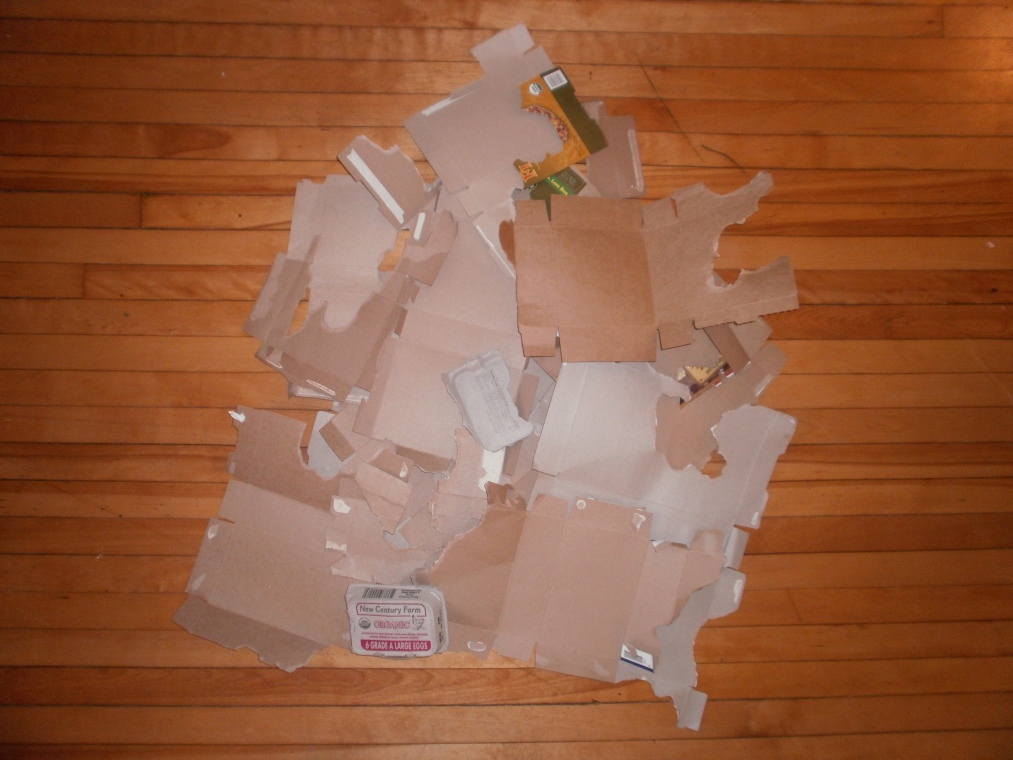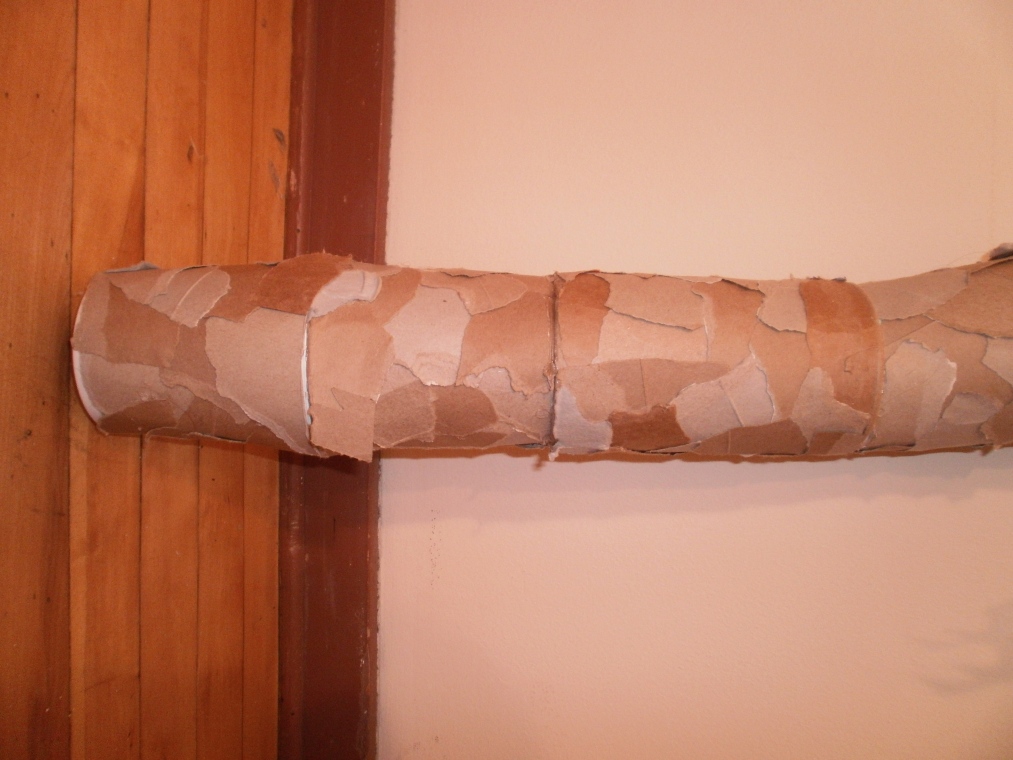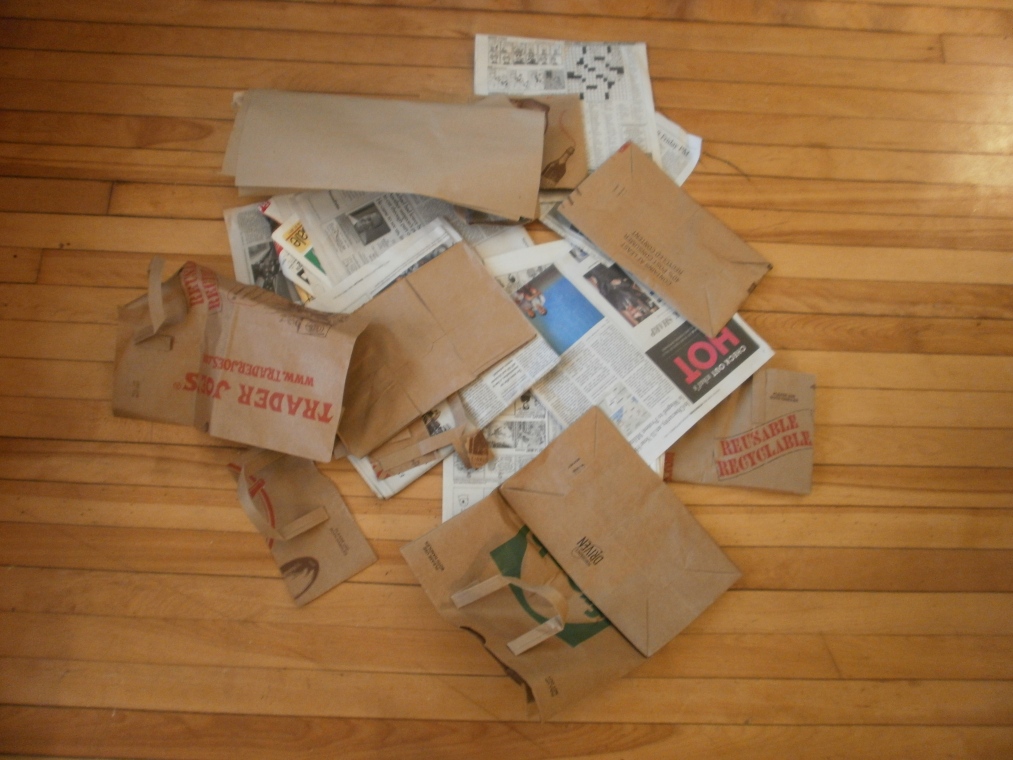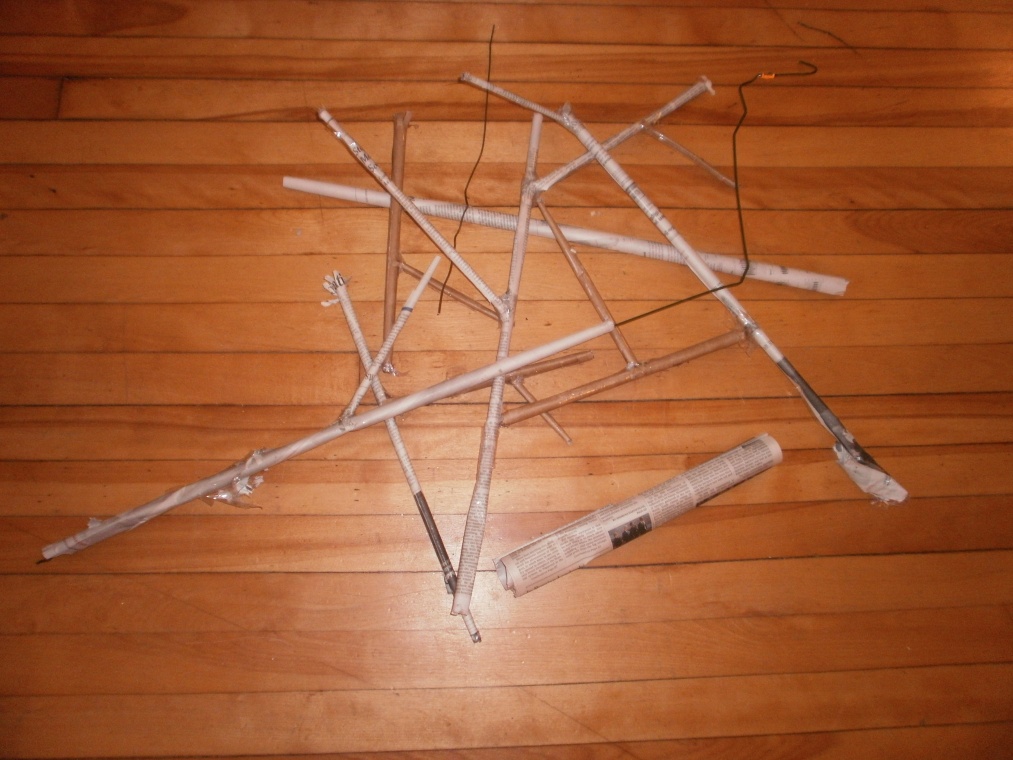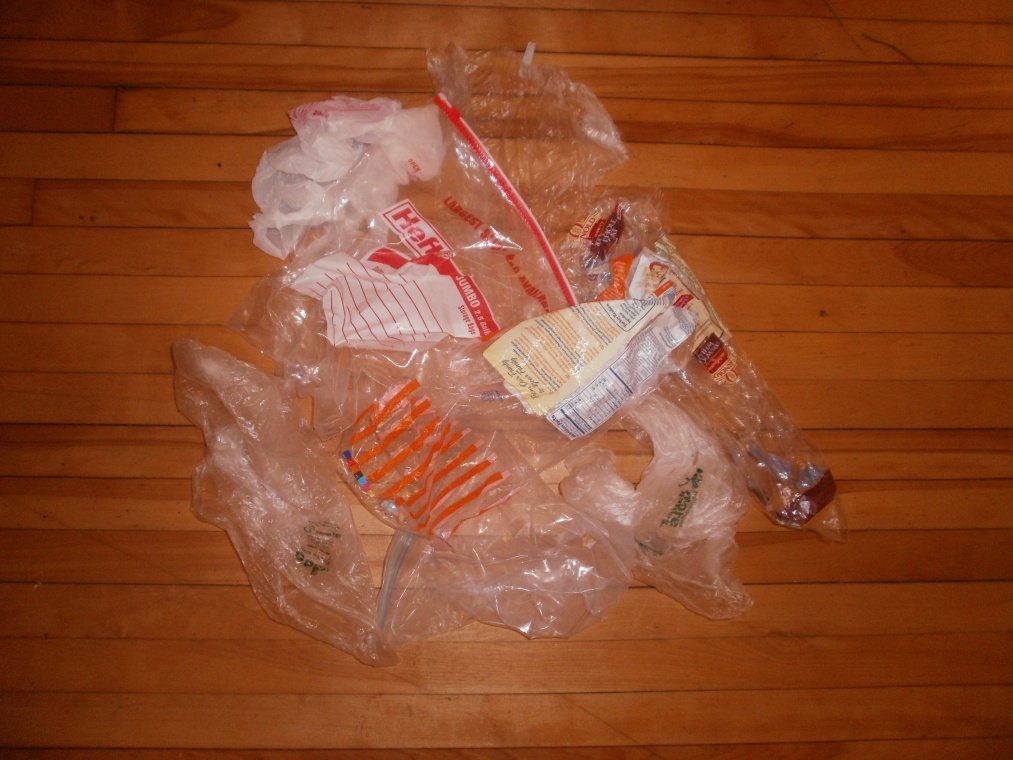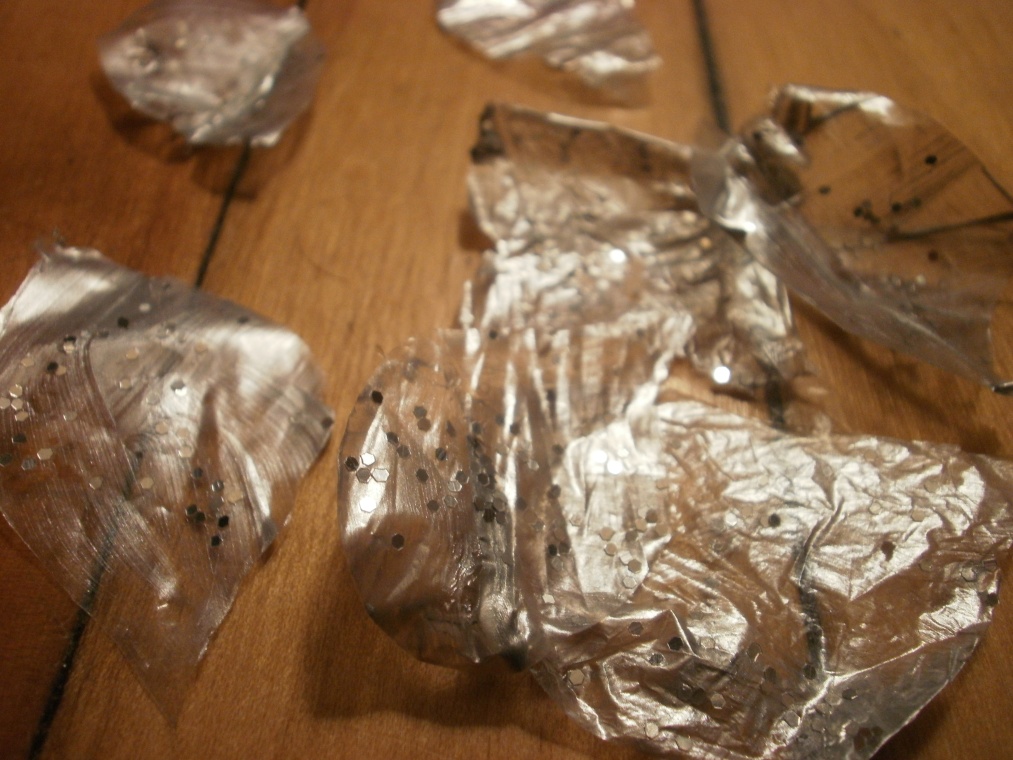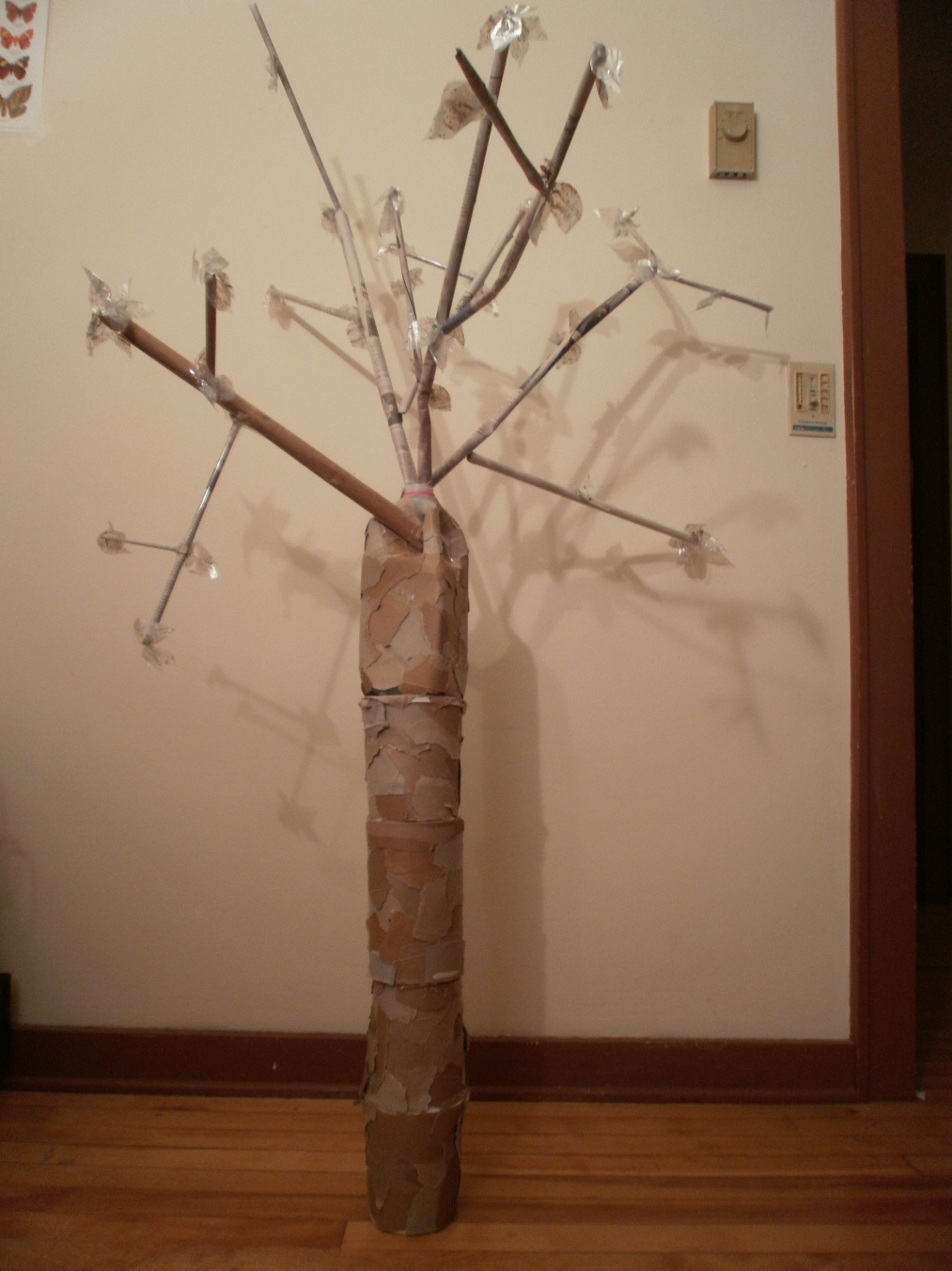Stephanie Goodwin
Introduction
Trees have always been especially inspirational to me. I love that they create the air we need to live, that on average their life is longer than a human’s, that their visual appearance changes many times in one year, that they have so much life invisible beneath the ground. To me, they represent life and therefore also the antithesis of trash. In my project I will combine these two polar forces into a tree sculpture made of found detritus materials in order to heighten their fascinating contrast. However, the contradistinction I am most interested in exploring is that of art and trash. I hope to break down many of negative feelings people associate with trash by using it to depict something beautiful. In addition, this manipulation of trash will allow me to make my own life more sustainable; the materials I use in my sculpture will be the trash I generate in my daily life. Therefore my project has two distinct goals: to live a more sustainable lifestyle by significantly reducing the amount of waste I produce and to change people’s perception of trash by transforming it into art. In this introduction I will examine how decreasing the amount of garbage in the world can help the longevity and health of our planet as well as the effects of trash art on communities.
As of 2009, Americans generate more trash than any other nation in the world (Beckrich). Of our 250 million tons of waste only 33% is recycled or composted, compared to Sweden, which recycles more than 60% of their waste (Grogan). They implement incentives to encourage recycling; residents pay a fee to buy a sticker to put on every bag they need disposed. Other nations are experimenting with innovative programs to try to significantly increase the recycled to waste ratio. For example, in Israel waste is recycled at source and the Brazilian government pays “catadores” to scavenge the landfills for recyclable materials (Grogan). If we do not make more efforts to conserve the resources of our planet then, “the twenty-first century could witness a biodiversity collapse of 100-1,000 times greater than any other previous extinction since the dawn of humanity…” (The Futurist). Moreover our wasteful habits are extending beyond the Earth into outer-space; “The US Strategic Command…keeps a space surveillance network of sensors ever vigilant on tracking well over 13,000 human-made space objects, baseball-size and larger, orbiting Earth” (David). Therefore it is imperative that we decrease the amount of waste we generate because we are destroying Earth and its atmosphere. Although my efforts to reduce my personal trash are almost negligible in the “big picture,” any effort is a start, and hopefully I can inspire others to change their lifestyles as well.
The use of “trash” in art is not a new concept. Warhol manipulated discarded soup cans; Picasso included outdated newspapers in his synthetic cubism; Schwitters glued bits of detritus in his collages (Vergine). However most of these masters employed discarded materials in order to appeal to the masses. Using objects people recognized from their daily lives allowed artists to connect to people without formal iconographical knowledge or understanding of artistic theories. Contemporarily though, found objects have been used by the likes of Vik Muniz, Tyree Guyton, and others to unite and inspire communities.
“Trash art” is appreciably helping unite and inspire the residents of Detroit. Guyton, a Detroit native reclaimed “trash” like broken cars, old tires, unwanted shoes and dolls to transform his childhood street: Heidelbert St. The Heidelberg project evolved into decorating dilapidated houses with colorful polka dots and neon vacuum cleaners. His goal is not to simply brighten this urban area though, but to “provide hope and inspiration to local children through art…” (heidelbergproject.com) In a video on the website young children gawk at this seemingly fantasy world while art critics marvel at the Guyton’s innovation that has revolutionized this once crime laden street into an imagination haven. He even wrote a children’s book, Magic Trash that encourages youngsters to “find whimsy, brightness and joy in junk” (Shapiro). Another initiative in Detroit, the “Detroit Pretty City” project, commissions artists to make trash cans beautiful (Public Management 2003). These pieces are actually functional and interactive, thus helping to transform the associations people have with trash. Moreover, owners of the stores where the receptacles have been placed volunteered to empty them weekly in order to minimize the wear and tear on the cans. Thus this program also involves and unites the community in supplemental ways; these pieces of “trash art” compelled the shop owners to take initiative the keep their own city in optimum condition.
Vik Muniz, a Brazilian artist and the original inspiration for my project, did a series called “Pictures of Garbage” in 2008 that changed the impoverished lives of those at Jardim Gramacho. Through these monumental photographs of collages depicting workers, or catadores, of the enormous landfill Jardim Gramacho he could expose the hardships of their poverty to the rest of the world. The photographs spread awareness throughout the art community, but the documentary Wasteland reached thousands of people and inspired many to get involved to help people who live in similar conditions. The photos sold and generated thousands of dollars, which were redistributed into the cooperative to provide trucks, computers, a library, and a new business-training program for the catadores. In addition, those who modeled for the art pieces received $50,000 from Muniz (Kino). This demonstrates that Muniz is not simply preoccupied with the “transformation of garbage into art, and art into cash, but also of people’s lives” (Kino). I believe this to be the most powerful and compelling art – art that aims to better the world and the people in it. Moreover, this “trash art” invigorated and ameliorated the Jardim Gramacho community so that the people living there could take charge of their lives.
Writing about such large-scale issues and artistic endeavors, makes my miniature tree pale in comparison. However, I want it to still make a difference; it will not be nugatory. Even if it inspires one person to revaluate their notion of “trash” or to do something creative in their day then I feel I have accomplished my goals.
Works Cited:
Beckrich, Amanda. “The Green Room.” The Science Teacher (2011): 12.ProQuest. Web. 22 Nov. 2011.
David, Leonard. “The Clutter Above.” Bulletin of Atomic Scientists July-Aug. 2005: 32-37. Academic Search Premier. Web. 22 Nov. 2011.
Grogan, Peter. “International Recovery.” BioCycle 35.8 (1994): 82+. Print.
Kino, Carol. “Where Art Meets Trash and Transforms Life.” New York Times Magazine 24 Oct. 2010: 23. Academic Source Premier. Web. 22 Nov. 2011. <http://web.ebscohost.com.ezproxy.library.wisc.edu/ehost/detail?sid=b8891779-ecad-46f5-9d8c-afa601b8cd87%40sessionmgr112&vid=1&hid=105&bdata=JnNpdGU9ZWhvc3QtbGl2ZQ%3d%3d#db=aph&AN=54579109>.
“OUTLOOK 2008: Recent Forecasts from World Future Society for 2008 and Beyond.” The Futurist Nov.-Dec. 2007: 1. ProQuest 5000. Web. 22 Nov. 2011. <http://xerxes.library.wisconsin.edu.ezproxy.library.wisc.edu/wisc/metasearch/record?group=2011-11-23-003564&resultSet=036624&startRecord=1>.
Shapiro, J. H. “Magic Trash Review.” Rev. of Magic Trash a Story of Tyree Guyton and His Art. Academic Search Premier. Web. 22 Nov. 2011.
“Trash Cans Are Turned into Art.” PM. Public Management Aug. 2003: 31.ProQuest. Web. 22 Nov. 2011.
“What We Do.” The Heidelberg Project. Jan. 2010. Web. 23 Nov. 2011. <http://www.heidelberg.org>.
When Trash Becomes Art: Trash Rubbish Mongo. Ed. Lea Vergine. New York: Skira, 2007
